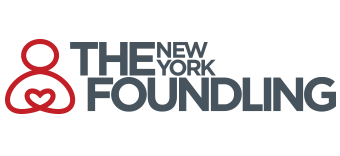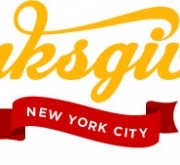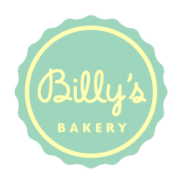Foundling Family Book Review – Issue #22
By Celia McGee
Farewell Floppy
By Benjamin Chaud (Chronicle Books)
Ages 4-6

The deal with growing up is plotting, planning and satisfactorily finessing how to say goodbye in the course of moving on from childish things. It never seems to quite work out according to the rationalization in question, especially when it involves a lifelong friend. The snub-nosed little boy in Benjamin Chaud’s Farewell Floppy, here translated from the original French, is determined to make a clean break (however much ambivalence he unwittingly expresses) from his pet rabbit, Floppy, named for his unusual ears. These are now one mark against him in the conformist eyes of developing childhood—“They don’t stand up straight like other rabbits’.” It’s also about who the boy has started to become. Case in point: such critical remarks would never have passed the lips of the “baby” who loved his bunny. Floppy isn’t suited or suitable to soccer, wrestling, or playing cowboys and Indians, condemned therefore to a parting of the ways, however gentle and liberating it’s supposed to be for both sides.
Into the woods is the uncertain path the erstwhile chums, where a sprouting portion of the undergrowth appears to be a guilty conscience, especially since Floppy doesn’t seem to embrace the new surroundings chosen for him. As an undertaking that leads farther into the dark forest than either has ventured before, the hike mirrors the fear that can still overcome a budding big boy. Chaud ingeniously transforms the red thread by which Floppy is finally left tied to a tree into a little breadcrumb action, forging a path not only to a new friend—a girl who knows that floppy ears denote a genuine and unusual “Lop bunny”–but to the possibility of an amended, amicable relationship between present, future and past. This resolution takes shape in the line Chaud uses to draw a certain main character’s mouth—stubbornly, angrily, and superciliously straight with frustration until the last page, where it bends upward on either end into something else.
To purchase click here.
Willy Maykit In Space
By Greg Trine, illustrated by James Burks (Houghton Mifflin Harcourt Books for Young Readers)
Ages 7-10

Lower-grade field trips are part adventure, part boredom, and part plain old ditching school for a bit. The same goes for Willy Maykit, in Greg Trine’s full-tilt, hilarious yet tenderly perceptive book. Except that not every fourth-grader’s father is a globe-trekking explorer whose fame and family are sorely tried when, as never before, on a foray into the Amazon jungle, he fails to return home—which is no boon to Willy’s father obsession. As another twist, Willy’s class field trip happens to be heading outside the solar system for a day of learning firsthand about another world, Planet Ed. Despite James Burks’s illustrations looking more retro than futuristic and Trine’s perfectly contemporary and kindly evocation of childhood’s multiple sensibilities, it’s fantastically off to Planet Ed that Willy et al. go, aboard the outer-space commuting Starlite 3000. It’s not all zooming carefree into the wide blue yonder, though. Willy’s heart switches to pit-a-pat mode at the presence of his crush, the extremely pretty and computer-savvy Cindy Das (she’s among the unreservedly multi-cultural array of characters nicely taken for granted). Nor does the humor-chip-lacking android pilot, Max, grasp his knock-knock jokes.
On the other hand, when has it not been a positive trait to follow Mr. Maykit’s mantra, “there is always something new around the bend?” Could be: when over-zealous curiosity separates Willy from the rest, and the Starlite 3000 takes off in an emergency without him. Also stranded are Cindy Das, having gone in search of him, his stowaway pet seagull, Phelps, and, from another planet entirely (and due to similar circumstances) Norp, a green Thorstockan their same age.
Almost every planet, too, must have a native population. Inconveniently, those bred on Ed are huge, smelly, apparently kid-eating monsters, nothing like the creatures that Willy and Cindy (and countless others) have long imagined as lurking in the closet or under the bed. At the same time, Trine adroitly and surreptitiously imparts educational pointers about how to outsmart and outpace what’s scary, get a good deed returned by a mortal foe, and discover that alien only is as alien does.
To purchase click here.
The Wollstonecraft Craft Detective Agency, No. 1: The Case of the Missing Moonstone
By Jordan Stratford, illustrated by Kelly Murphy (Random House Children’s Books)
Ages 8-12

Stories are made up, but it’s also fun to play around with bona fide history. In his debut installment of a promising series, Jordan Stratford gives it his all, and history accommodates his whimsicality.
To judge by the cover of this book, showing two young girls ascending over 1826 London in a hot air balloon invented by one and slowly accepted by the other, it’s not entirely remiss to feel a hint in reverse of Mary Poppins’s descent into the same city (somewhat later, mind you) out of pure fantasy and by open umbrella. But in spirit The Case of the Missing Moonstone more closely resembles Around the World In Eighty Days. Yet it barely leaves the posh Marleybone (unless you count an intrepid venture inside Newgate Prison) where 11-year-old Lady Ada Byron lives in isolated splendor, and where 14-year-old Mary Godwin arrives for the purpose of sharing a tutor they mercilessly nickname Peebs. In her time there, Mary provides assumingly corrective companionship to the budding inventor, bibliophile, and eccentric genius whose father was, in fact, Lord Byron.
Facts—some of the most interesting, important and prescient of the 18th and 19th centuries—abound in Stratford’s novel. After all, Mary’s mother was the feminist intellectual Mary Wollstonecraft, author of The Vindication of the Rights of Women, and the great Romantic poet Percy Bysshe Shelley was not only Lord Byron’s close friend but would be Mary Godwin’s husband when she wrote Frankenstein. It’s what Stratford does with those facts and the historical figures attached to them that produces his story’s magic, along with some imagined characters to bring extra drama and dastardly criminal elements to a tale of two young girls facing down wicked plots and pernicious deeds under the banner of their newly formed investigation operation. Because he also invests these two very different beings with complex personalities, he is all the more able to take his time-scrambling notions and run with them. All will be glad to follow.
To purchase click here.
All the Bright Places
By Jennifer Niven (Knopf Books for Younger Readers)
Ages 14 and up

They don’t meet cute: it’s on the bell tower, six stories above their Indiana high school, where he is again contemplating suicide, and she, there for the first time, is despairingly marking the first anniversary of her sister’s death. In high school’s ruthless pecking order, Theodore Finch and Violet Markey could not be further apart. Though new, she’s from beach-breezy California and “cheerleader popular.” Since eighth grade, and some unspoken chapter in his progressively troubled history, he’s been teased, tortured and excluded as “Theodore the Freak.” Naturally, the anxious crowd gathered below, and a sentimental local media, mix up who saved whom. His preferred name, to his few friends and throughout Jennifer Niven’s uncompromising, seriously romantic, generous, devastating and also stingingly funny novel, is Finch.As in Atticus? Or as in a wounded bird nevertheless able to reach altitudes of stunning intelligence and true love, grace and joy? Or both?
Niven implies such questions in a story that deserves to be read for its commitment to unveiling some of the psyche’s hardest afflictions, no matter how bravely and idiosyncratically it chooses to fight back, and for its memorable, no-holds-barred portrait of family, community, and the singular conditions of adolescence. The clinical diagnosis of Finch’s mood swings and death wish reveals itself gradually. Blunders are made. Yet Niven’s fresh, engaging, polished writing contains a subtlety free of jargon. In service to a goofy geography assignment, Finch and Violet hightail it to loony tourist attractions in the nearby heartland. Roller-coaster rides stand out, for a reason.
Their unlikely friendship and the potentially life-saving passion it fuels, is a fragile wonder and zany delight. They correspond secretly on Facebook by quoting Virginia Woolf—mutually astonished, giddily grateful, and ominously apropos. When Finch’s sense of self goes dark, Violet–realizing that, in history as in life, “it’s not what you take, it’s what you leave behind”–comes closest to an understanding.
To purchase click here.











